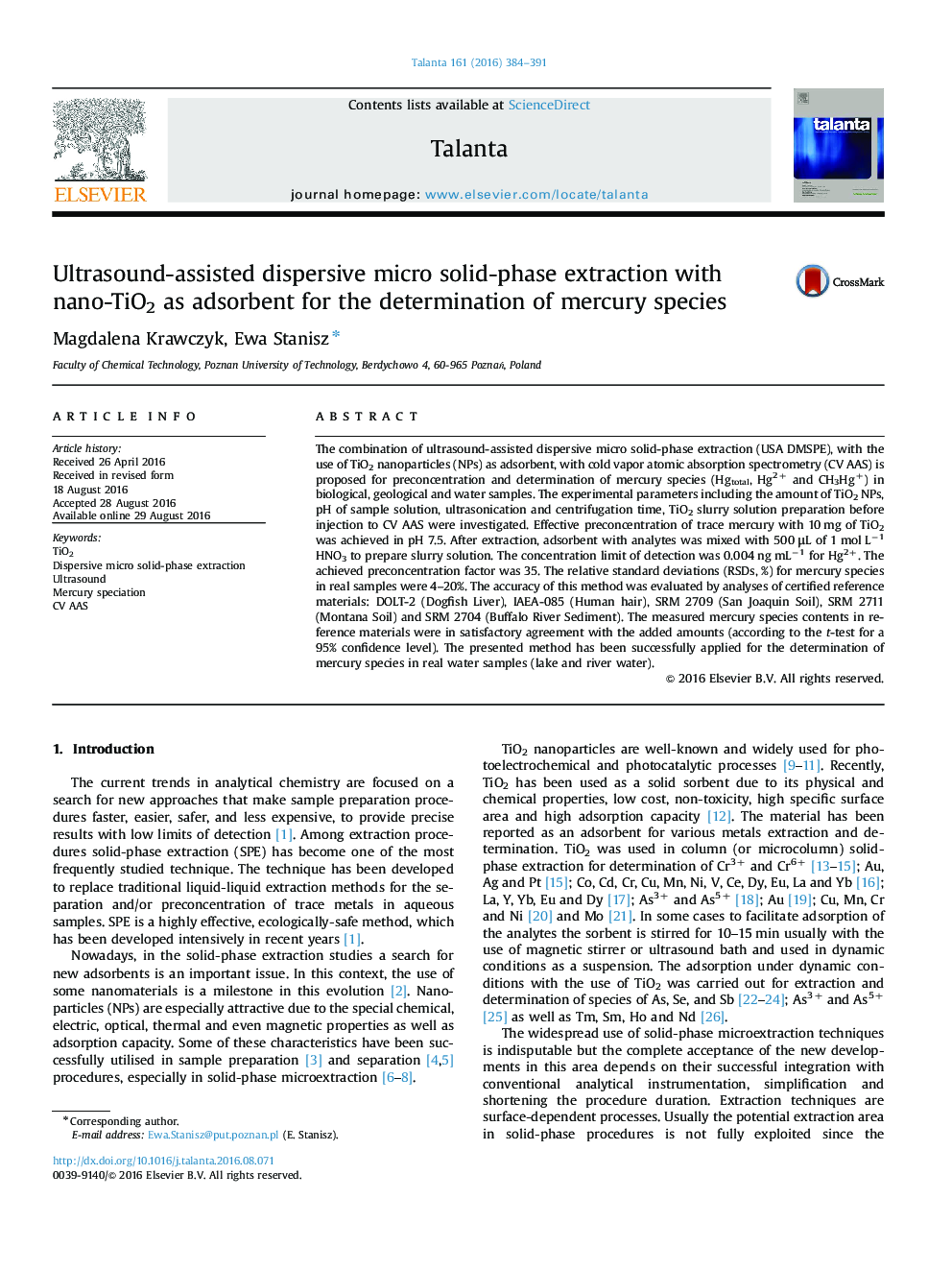| Article ID | Journal | Published Year | Pages | File Type |
|---|---|---|---|---|
| 1241728 | Talanta | 2016 | 8 Pages |
•A new solid-phase extraction procedure for Hg species determination was proposed.•Ultrasound-assisted dispersion of nano-TiO2 was used.•The effect of ultrasound on the extraction was studied.•No back-extraction was needed before CV AAS determination of Hg species.•An application to Hg species determination in complex matrices was presented.
The combination of ultrasound-assisted dispersive micro solid-phase extraction (USA DMSPE), with the use of TiO2 nanoparticles (NPs) as adsorbent, with cold vapor atomic absorption spectrometry (CV AAS) is proposed for preconcentration and determination of mercury species (Hgtotal, Hg2+ and CH3Hg+) in biological, geological and water samples. The experimental parameters including the amount of TiO2 NPs, pH of sample solution, ultrasonication and centrifugation time, TiO2 slurry solution preparation before injection to CV AAS were investigated. Effective preconcentration of trace mercury with 10 mg of TiO2 was achieved in pH 7.5. After extraction, adsorbent with analytes was mixed with 500 μL of 1 mol L−1 HNO3 to prepare slurry solution. The concentration limit of detection was 0.004 ng mL−1 for Hg2+. The achieved preconcentration factor was 35. The relative standard deviations (RSDs, %) for mercury species in real samples were 4–20%. The accuracy of this method was evaluated by analyses of certified reference materials: DOLT-2 (Dogfish Liver), IAEA-085 (Human hair), SRM 2709 (San Joaquin Soil), SRM 2711 (Montana Soil) and SRM 2704 (Buffalo River Sediment). The measured mercury species contents in reference materials were in satisfactory agreement with the added amounts (according to the t-test for a 95% confidence level). The presented method has been successfully applied for the determination of mercury species in real water samples (lake and river water).
Graphical abstractIn this study the analytical potential of USA DMSPE with nano-TiO2 as adsorbent combined with cold vapor AAS in the determination of mercury species was evaluated.Figure optionsDownload full-size imageDownload as PowerPoint slide
